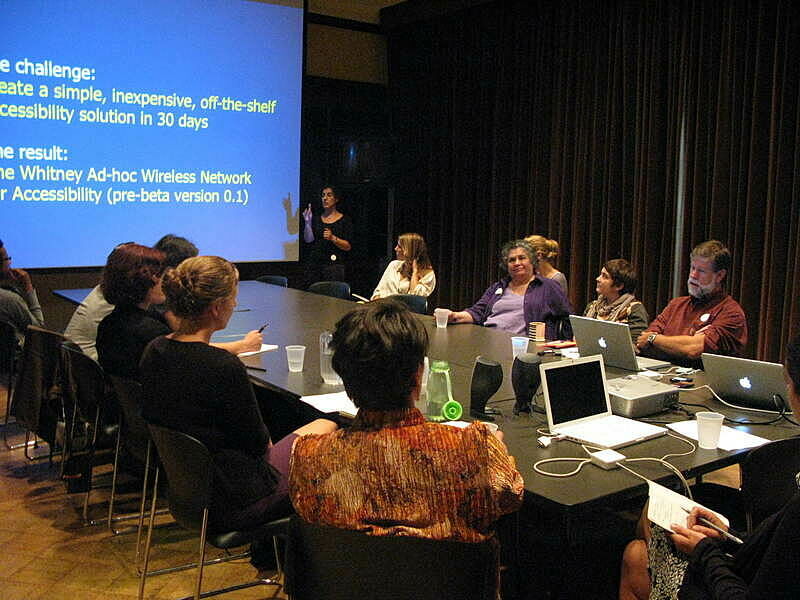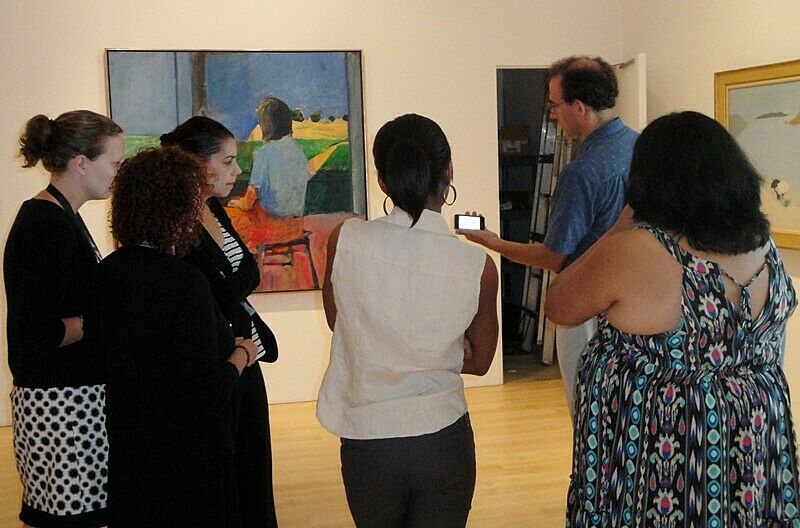Captions in your Hand?
Oct 26, 2010
Captions in your hand and audio descriptions at the press of a button, these are just some of the ideas the Whitney has been exploring in collaboration with our partners at the National Center for Accessible Media at WGBH.
WGBH has been a pioneer in making television, movie theaters, websites (including whitney.org), museums and even theme parks technologically accessible to the widest possible audience. The Whitney asked WGBH to work with us to explore ways iPhones, Blackberries, and other handheld devices could be used to assist visitors who are blind or have low vision, deaf or hard of hearing experience the Whitney’s collection and exhibitions.
When a visitor who is blind or has low vision visits the Museum, they must often rely on others to describe the works on view as well as the wall labels and text. Similarly, a Museum visitor who is deaf or hard of hearing is reliant on transcripts or sound descriptions on wall labels to get a sense of the sound or dialogue that accompanies any film and video works. The Whitney and WGBH decided to work together in order to address these issues and determine the best means of providing all visitors with a more independent and informative Museum visit.
Working with objects in the Whitney’s collection, WGBH used a portable wireless network and several commonly available mobile handsets to research a usable solution for access to our exhibitions.
As a start, WGBH created audio descriptions and closed captions for three objects in the Whitney’s collections: Louise Bourgeois, Pink Days and Blue Days; Richard Diebenkorn, Girl Looking at Landscape, and; Vito Acconci, Claim Excerpts.
Using an accessible wireless handheld device, such as a smartphone, a blind or visually impaired visitor to the Whitney could listen to an audio description of Louise Bourgeois’s Pink Days and Blue Days or Richard Diebenkorn’s Girl Looking at a Landscape in addition to other works on view. Similarly, an individual who is deaf or hard of hearing would be able to access captions to video works. During a recent presentation at the Whitney, staff from WGBH demonstrated how a Museum visitor who was deaf would be able to approach Vito Acconci’s video Claim Excerpts, and by selecting a link from a web page, view captions on their handheld device.
We are now in the process of conducting user testing and evaluation with museum patrons and advisors. Check back soon for more information!


